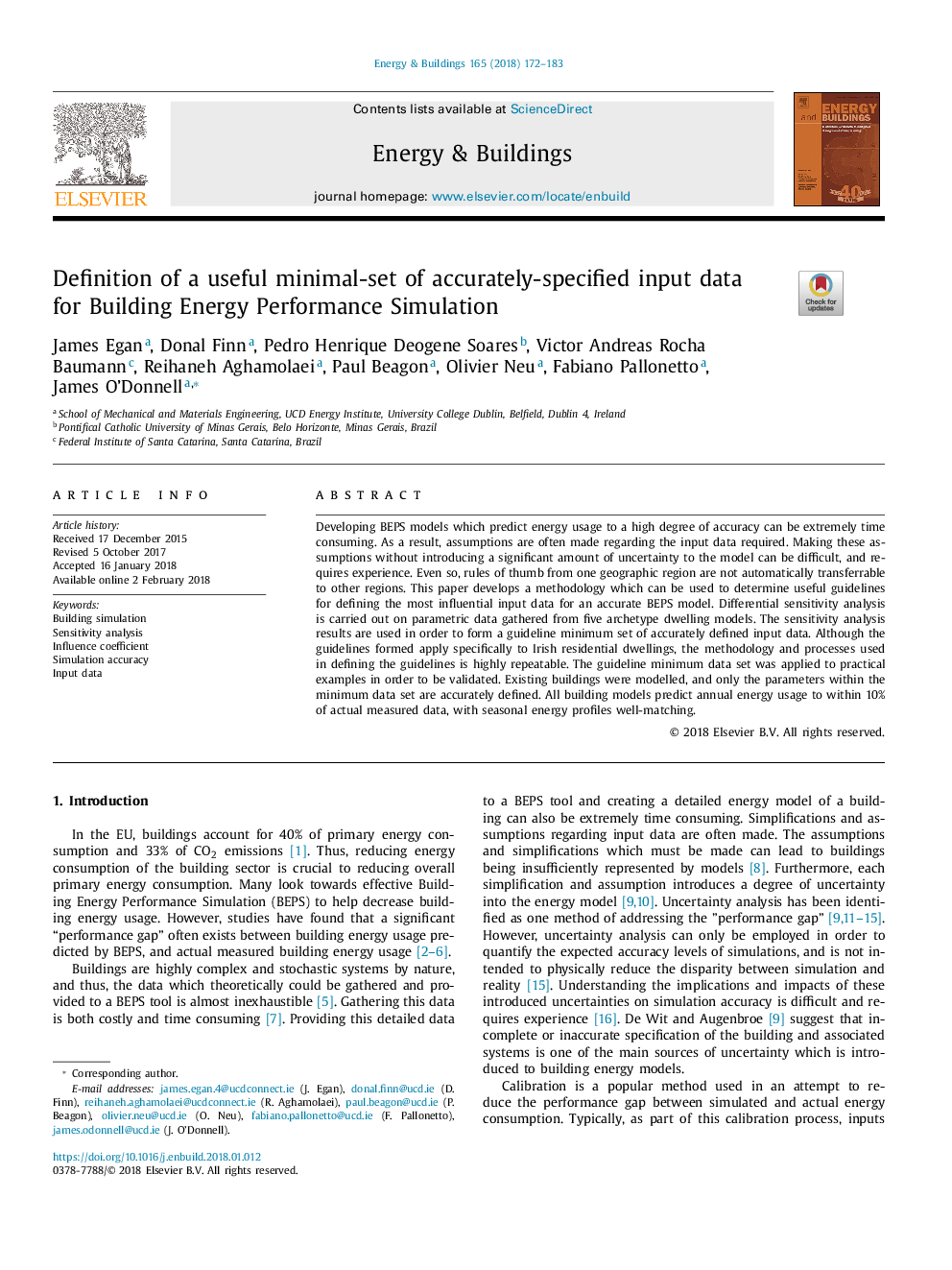| Article ID | Journal | Published Year | Pages | File Type |
|---|---|---|---|---|
| 6728570 | Energy and Buildings | 2018 | 12 Pages |
Abstract
Developing BEPS models which predict energy usage to a high degree of accuracy can be extremely time consuming. As a result, assumptions are often made regarding the input data required. Making these assumptions without introducing a significant amount of uncertainty to the model can be difficult, and requires experience. Even so, rules of thumb from one geographic region are not automatically transferrable to other regions. This paper develops a methodology which can be used to determine useful guidelines for defining the most influential input data for an accurate BEPS model. Differential sensitivity analysis is carried out on parametric data gathered from five archetype dwelling models. The sensitivity analysis results are used in order to form a guideline minimum set of accurately defined input data. Although the guidelines formed apply specifically to Irish residential dwellings, the methodology and processes used in defining the guidelines is highly repeatable. The guideline minimum data set was applied to practical examples in order to be validated. Existing buildings were modelled, and only the parameters within the minimum data set are accurately defined. All building models predict annual energy usage to within 10% of actual measured data, with seasonal energy profiles well-matching.
Related Topics
Physical Sciences and Engineering
Energy
Renewable Energy, Sustainability and the Environment
Authors
James Egan, Donal Finn, Pedro Henrique Deogene Soares, Victor Andreas Rocha Baumann, Reihaneh Aghamolaei, Paul Beagon, Olivier Neu, Fabiano Pallonetto, James O'Donnell,
